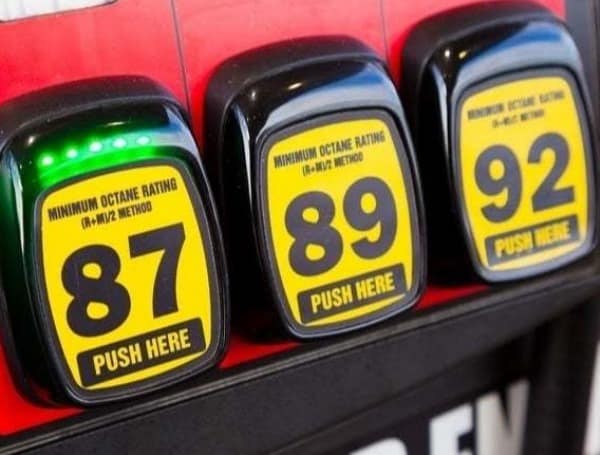Recent fluctuations in gasoline prices have left consumers facing a rollercoaster of costs at the pump. Although there was a slight dip in prices over the weekend, the decrease was not significant enough to counteract a surge experienced earlier in the week.
Adding to the complexities, a series of challenges, including storms in the Atlantic Ocean and the Gulf of Mexico, could potentially drive gasoline prices even higher in the near future.
The AAA auto club’s data revealed that the average price of a gallon of regular unleaded gas in Florida stood at $3.81 on Monday, marking an increase of 8 cents from the previous week. These price variations highlight the ongoing volatility in fuel costs, influenced by a blend of global factors, market dynamics, and regional considerations.
In the news: Court To Hear Arguments In Florida ‘Stop WOKE’ Business Fight
The onset of storm season introduces another layer of uncertainty into the equation. Tropical storms and hurricanes can have a profound impact on the fuel supply chain, particularly if they pose a threat to the refineries situated along the Gulf Coast. These refineries, which are critical suppliers of gasoline to Florida, can experience disruptions in production and distribution due to severe weather events.
As the tropical season gains momentum, the potential for such disruptions to impact the supply chain and trigger price hikes remains a significant concern. AAA spokesman Mark Jenkins emphasized this point, stating that “the volatility in prices at the pump will likely continue throughout the next couple of months, now that the tropics are beginning to heat up.” He explained that pump prices typically rise when tropical systems threaten refineries along the Texas, Louisiana, and Mississippi coastlines.
The extent of price increases in response to storm-related disruptions varies depending on factors such as the severity of the storm and the extent of damages sustained by refineries and the supply chain.
Consumers in Florida have experienced the consequences of these market shifts firsthand, with the average price of gasoline on Monday being 33 cents higher than a month earlier and 27 cents higher than a year ago. Nationally, the average price stood at $3.87 per gallon on Monday, reflecting a 28-cent increase from a month ago but a 3-cent decrease from a year ago.
In the news: UF/IFAS Florida Sea Grant Survey Seeks Boater Input On Existing And Needed Resources
As the situation continues to evolve, consumers and stakeholders alike must remain vigilant and adaptable in the face of changing fuel prices. Mitigating the impacts of price fluctuations may involve exploring energy-efficient transportation alternatives, adhering to responsible driving practices, and staying informed about market developments and potential disruptions.
Android Users, Click To Download The Free Press App And Never Miss A Story. Follow Us On Facebook and Twitter. Signup for our free newsletter.
We can’t do this without your help; visit our GiveSendGo page and donate any dollar amount; every penny helps

